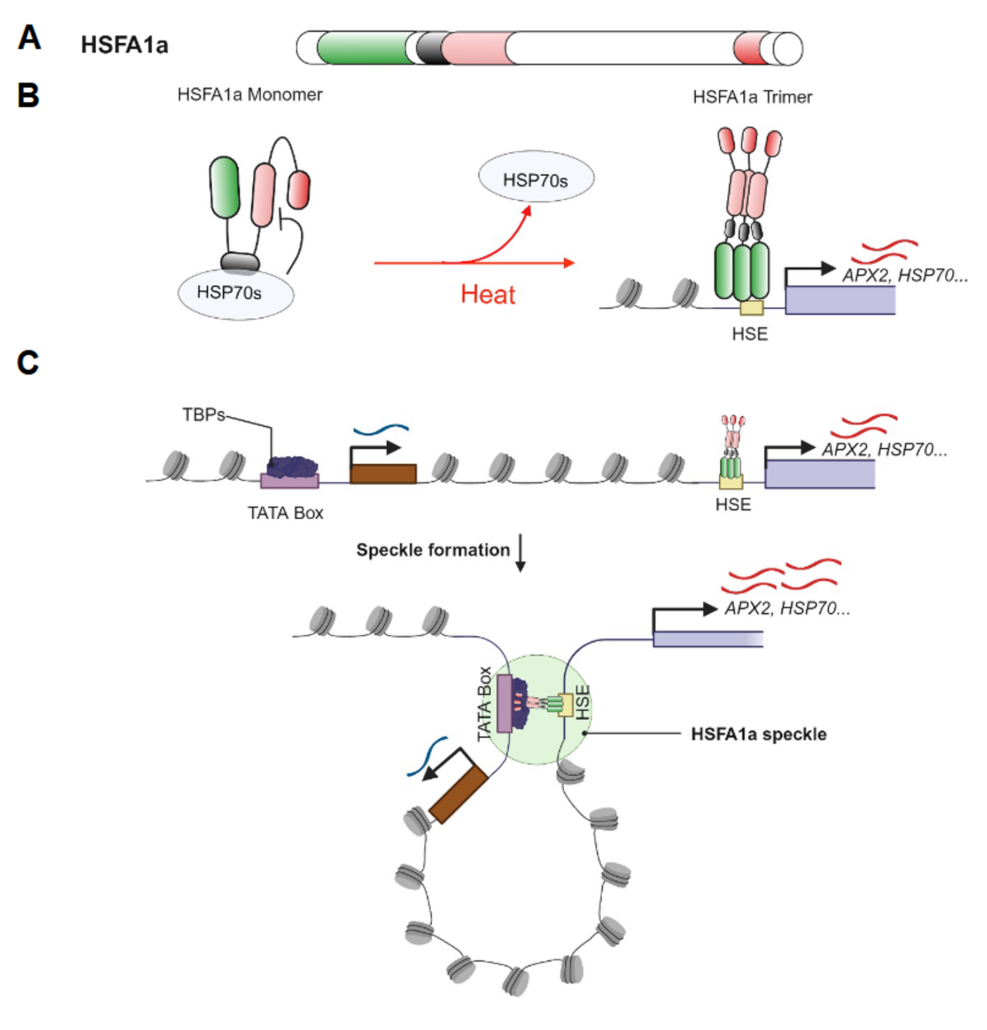
Prion-like domains of sensory HSFs remember heat
Plant Science Research WeeklyThe heat shock response, a rapid transcriptional response to heat, was first observed nearly 60 years ago, and has long been a paradigm for understanding gene responses to exogenous cues. The family of genes encoding heat shock factors (HSFs) is greatly expanded in plants. These HSFs serve as key regulators…
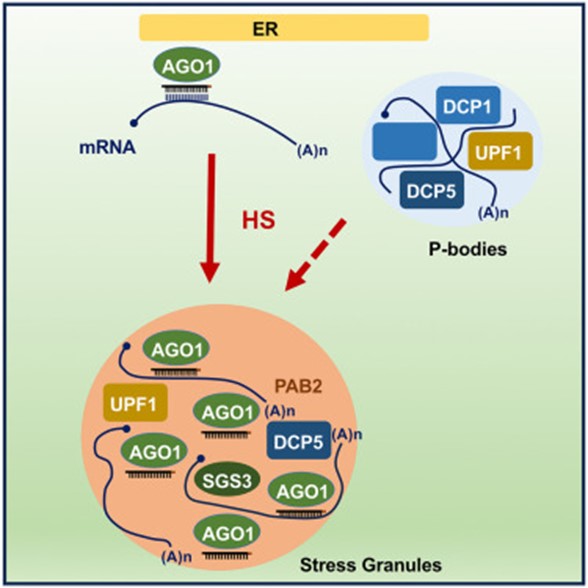
Heat stress promotes Arabidopsis AGO1 phase separation and association with stress granule components
Plant Science Research WeeklyA new article by Blagojevic, Baldrich, and Schiaffini et al. reveals that Arabidopsis ARGONAUTE1 (AGO1) protein, a pivotal agent in miRNA and siRNA-mediated gene silencing associated with the rough endoplasmic reticulum, dynamically localizes within stress granule components during heat stress (HS).…
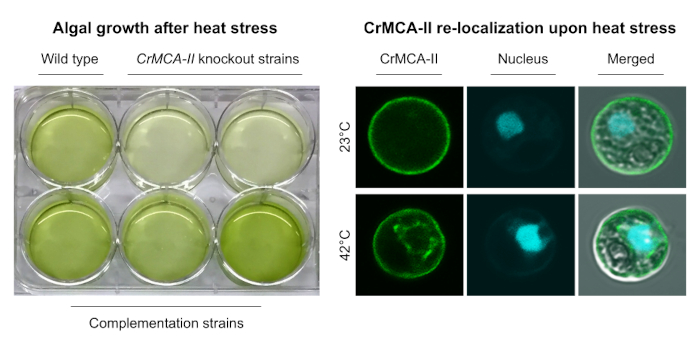
Thermoprotection by a metacaspase
The Plant Cell: In a NutshellZhou et al. examine the fundamental functions of metacaspases in the unicellular green alga Chlamydomonas reinhardtii.
https://doi.org/10.1093/plcell/koad289
By Yong Zou, Adrian N. Dauphinee, Simon Stael and Peter V. Bozhkov
Department of Molecular Sciences, Uppsala BioCenter, Swedish University…
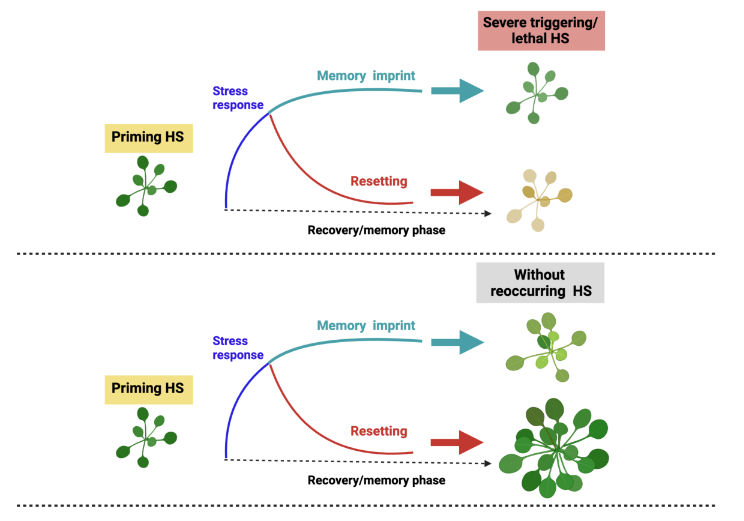
Review. Autophagy: A key player in the recovery of plants from heat stress
Plant Science Research WeeklyPlants have a remarkable ability to adapt to stress. For many stresses, plants respond to short-term mild exposure by becoming more tolerant to subsequent harsher stresses that would otherwise be lethal; this effect is known as priming. Priming occurs through several mechanisms that can include changes…

Runaway transcription makes plants sensitive to heat stress
The Plant Cell: In a Nutshell
Kim et al. investigate the role of a heat shock protein in thermotolerance.
https://doi.org/10.1093/plcell/koac351
By Minsoo Kim and Elizabeth Vierling at UMass Amherst
Background: Plants can survive heat stress by producing heat shock proteins (HSPs) that protect and rescue other proteins.…
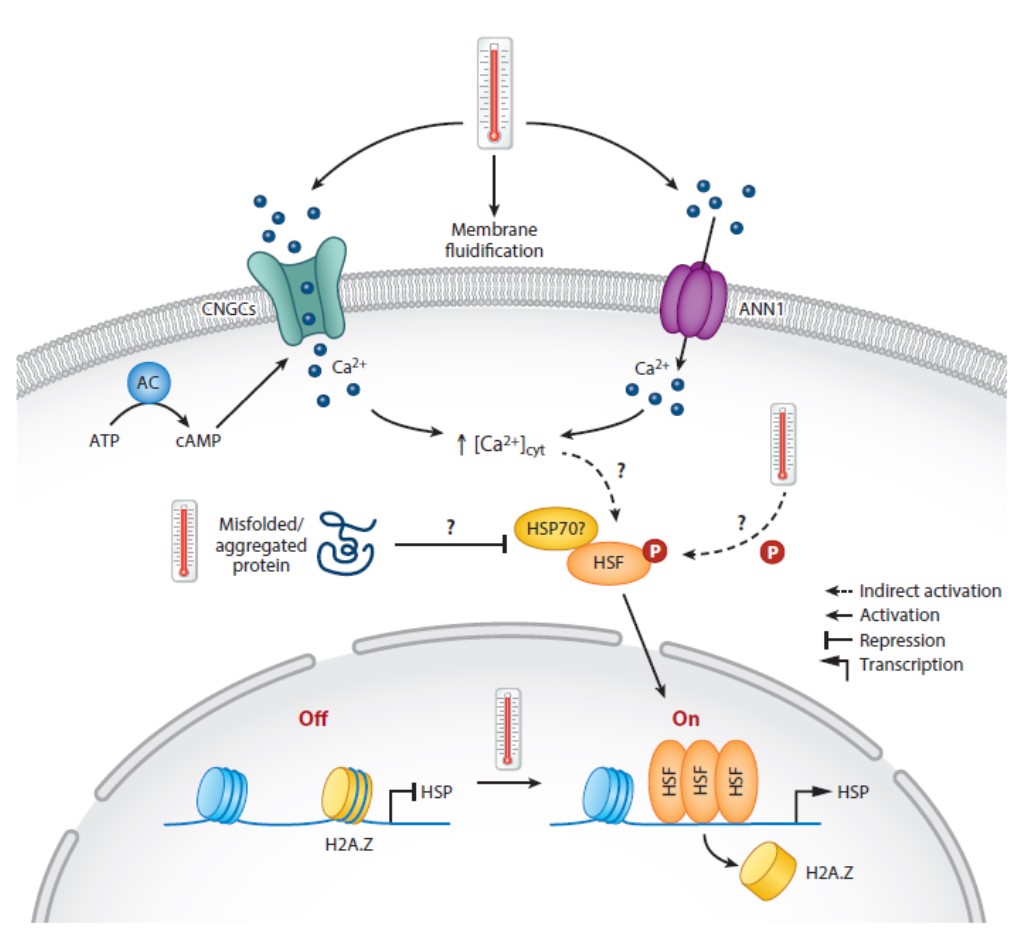
Review: Temperature sensing in plants
Plant Science Research WeeklyLike all organisms, plants respond to changes in temperature by activating pathways that enable them to stay alive in spite of rising or lowering temperatures. Interestingly though, there is no universal temperature sensing mechanism across the domains of life. Changes in membrane fluidity (think of…
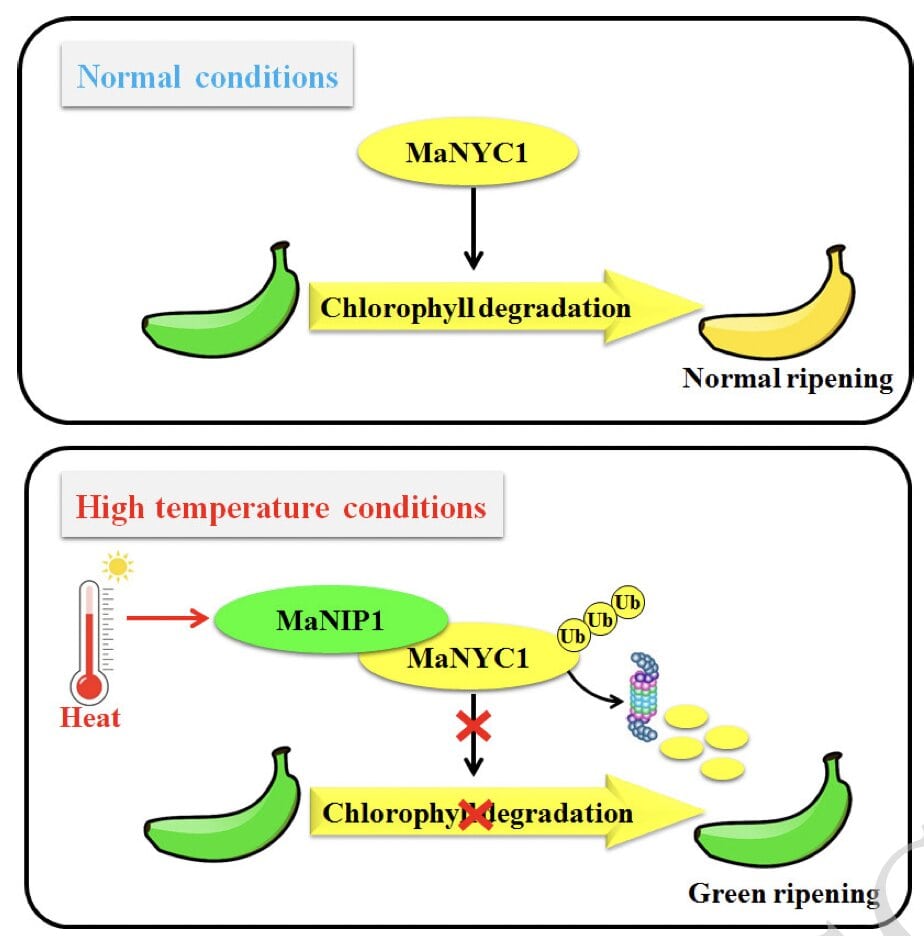
Mechanism behind ripened green bananas under high temperature
Plant Science Research WeeklyHeat stress is a common consequence of global warming for terrestrial plants, and it can have devastating effects on growth and yield. In terms of fruit ripening, high temperature is one of the most significant abiotic stresses inhibiting quality formation. During fruit ripening, chlorophyll breaks down…
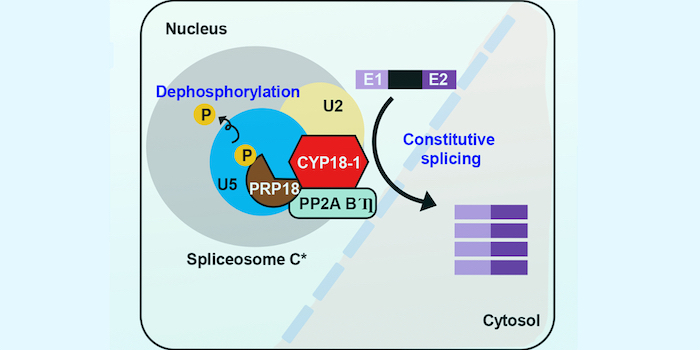
A spliceophilin helps Arabidopsis adapt to heat stress
The Plant Cell: In a NutshellJo et al. uncover the role of a spliceosome component in removing retained introns in Arabidopsis in response to heat stress https://doi.org/10.1093/plcell/koac084
Background: Alternative splicing plays a key role in abiotic stress responses in plants, especially responses to heat stress. The spliceosome…
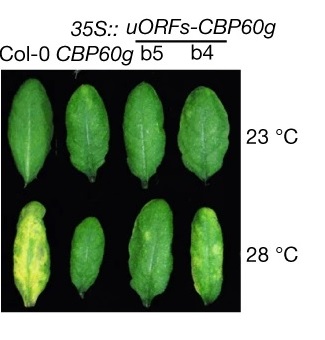
Increasing the resilience of plant immunity to a warming climate (Nature)
Plant Science Research WeeklyPlants demonstrate increased susceptibility to pathogens upon exposure to heat stress, apparently due to suppressed salicylic acid (SA) accumulation and subsequently decreased effector-triggered immunity. How exactly does heat stress cause this suppression, and how can we take advantage of genetics to…

